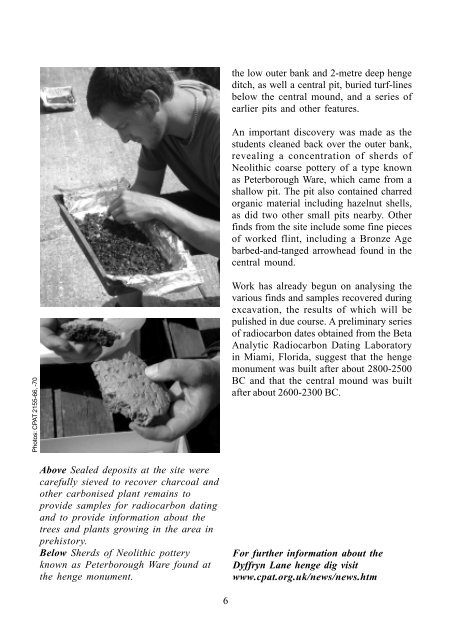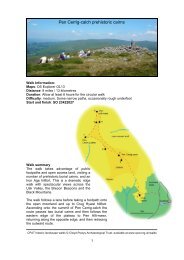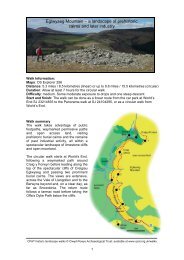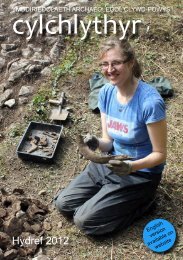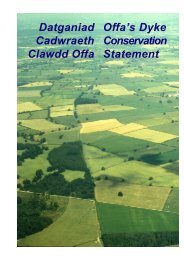Spring 2007 issue - Clwyd-Powys Archaeological Trust
Spring 2007 issue - Clwyd-Powys Archaeological Trust
Spring 2007 issue - Clwyd-Powys Archaeological Trust
- No tags were found...
Create successful ePaper yourself
Turn your PDF publications into a flip-book with our unique Google optimized e-Paper software.
the low outer bank and 2-metre deep hengeditch, as well a central pit, buried turf-linesbelow the central mound, and a series ofearlier pits and other features.An important discovery was made as thestudents cleaned back over the outer bank,revealing a concentration of sherds ofNeolithic coarse pottery of a type knownas Peterborough Ware, which came from ashallow pit. The pit also contained charredorganic material including hazelnut shells,as did two other small pits nearby. Otherfinds from the site include some fine piecesof worked flint, including a Bronze Agebarbed-and-tanged arrowhead found in thecentral mound.Photos: CPAT 2155-66, -70Above Sealed deposits at the site werecarefully sieved to recover charcoal andother carbonised plant remains toprovide samples for radiocarbon datingand to provide information about thetrees and plants growing in the area inprehistory.Below Sherds of Neolithic potteryknown as Peterborough Ware found atthe henge monument.Work has already begun on analysing thevarious finds and samples recovered duringexcavation, the results of which will bepulished in due course. A preliminary seriesof radiocarbon dates obtained from the BetaAnalytic Radiocarbon Dating Laboratoryin Miami, Florida, suggest that the hengemonument was built after about 2800-2500BC and that the central mound was builtafter about 2600-2300 BC.For further information about theDyffryn Lane henge dig visitwww.cpat.org.uk/news/news.htm6


